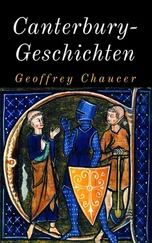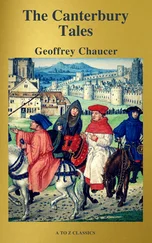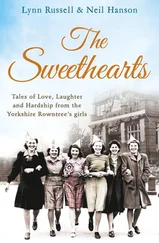For a like reason, where equivalent spellings occur, I select the simpler; writing couthe (as in Pt.) for kowthe , sote for soote , sege for seege , and so on. In words such as our or oure , your or youre , hir or hire , neuer or neuere , I usually give the simpler forms, without the final -e , when the -e is obviously silent.
For consonantal u , as in neuer , I write v , as in never . This is usual in all editions. But I could not bring myself to use j for i consonant; the anachronism is too great. Never for neuer is common in the fifteenth century, but j does not occur even in the first folio of Shakespeare. I therefore usually keep the capital i of the MSS. and of the Elizabethan printers, as in Ioye (= joye ) where initial, and the small i , as in enioinen = enjoinen ) elsewhere. Those who dislike such conservatism may be comforted by the reflection that the sound rarely occurs.
The word eye has to be altered to yë at the end of a line, to preserve the rimes. The scribes usually write eye in the middle of a line, but when they come to it at the end of one, they are fairly puzzled. In l. 10, the scribe of Hn. writes Iye , and that of Ln. writes yhe ; and the variations on this theme are most curious. The spelling ye (= yë ) is, however, common; as in A 1096 (Cm., Pt.). I print it 'yë' to distinguish it from ye , the pl. pronoun.
These minute variations are, I trust, legitimate, and I have not recorded them. They cause trouble to the editor, but afford ease to the reader, which seems a sufficient justification for adopting them. But the scrupulous critic need not fear that the MS. has been departed from in any case, where it could make any phonetic difference, without due notice. Thus, in l. 9, where I have changed foweles into fowles as being a more usual form, the fact that foweles is the Ellesmere spelling is duly recorded in the footnotes. And so in other cases.
The footnotes do not record various readings where E. is correct as it stands; they have purposely been made as concise as possible. It would have been easy to multiply them fourfold without giving much information of value; this is not unfrequently done, but the gain is slight. With so good a MS. as the basis of the text, it did not seem desirable.
The following methods for shortening the footnotes have been adopted.
1. Sometimes only the readings of some of the MSS. are given. Thus at l. 9 (p. 1), I omit the readings of Cp. and of Cm. As a fact, neither of these MSS. contain the line; but it was not worth while to take up space by saying so. At l. 10 (p. 1), I again omit the readings of Cp. and of Cm., for the same reason; also of Ln., which is a poor MS., though here it agrees with Hl. (having yhe); also of Pt., which has eyghe, a spelling not here to be thought of. At l. 12, I just note that E. has pilgrimage (by mistake); of course this means that it should have had pilgrimages in the plural, as in other MSS., and as required by the rime.
2. At l. 23 (p. 2), the remark 'rest was' implies that all the rest of the seven MSS. specially collated have 'was.' The word 'rest' is a convenient abbreviation.
3. When, as at l. 53, I give nacions as a rejected reading of E. in the footnote, it will be understood that naciouns is a better spelling, justified by other MSS., and by other lines in E. itself. E.g., naciouns occurs in Hl. and Pt., and Cm. has naciounnys .
4. I often use 'om.' for 'omit,' or 'omits' as in the footnote to l. 188 (p. 6).
5. At l. 335 (p. 11), I give the footnote:—'ever] Hl. al.' This means that MS. Hl. has al instead of the word ever of the other MSS. It seemed worth noting; but ever is probably right.
6. At l. 520 (p. 16), the note is:—'All but Hl. this was.' That is, Hl. has was, as in the text; the rest have this was, where the addition of this sadly clogs the line.
With these hints, the footnotes present no difficulty.
As a rule, I have refrained from all emendation; but, in B 1189, I have ventured to suggest physices [3], for reasons explained in the Notes. Those who prefer the reading Phislyas can adopt it.
For further details regarding particular passages, I beg leave to refer the reader to the Notes in vol. v.
§ 5. Table of Symbols denoting MSS.
Cm.—Cambridge Univ. Lib. Gg. 4. 27 (Ellesmere type). No. 28 in list.
Cp.—Carpus Chr. Coll., Oxford, no. 198. No. 24.
Dd.—Cambridge Univ. Lib. Dd. 4. 24 (Ellesmere type). No. 29.
E.—Ellesmere MS. (basis of the text). No. 40.
Harl.—Harl. 1758; Brit. Mus.; see p. 645. No. 4.
Hl.—Harl. 7334; British Museum. No. 1.
Hn.—Hengwrt MS. no. 154. No. 41.
Li. or Lich.—Lichfield MS.; see pp. 533-553. No. 35.
Ln.—Lansdowne 851; Brit. Mus. (Corpus type). No. 10.
Pt.—Petworth MS. No. 42.
Rl. or Roy.—Royal 18 C. II; Brit. Mus.; see p. 645. No. 6.
Seld.—Arch. Selden, B. 14; Bodleian Library. No. 18.
Sl. or Slo.—Sloane 1685: Brit. Mus.; see p. 645. No. 8.
§ 6. Table shewing the various ways of numbering the lines.
| Six-text (as here) |
Tyrwhitt. |
Wright. |
| A—1-4422 |
1-4420 [4] |
1-4420 [4] |
| B—1-1162 |
4421-5582 |
4421-5582 |
| B—1163-2156 |
12903-13894 [5] |
14384-15374 [6] |
| B—2157-3078 [7] |
Prose; not counted [8]. |
Prose; not counted. |
| B—3079-3564 |
13895-14380 |
15375-15860 |
| B—3565-3652 |
14685-14772 |
15861-15948 |
| B—3653-3956 |
14381-14684 |
15949-16262 |
| B—3957-4652 |
14773-15468 |
16253-16932 [9] |
| Spurious; see p. 289, note. |
11929-11934 |
13410-13415 |
| C—1-968 |
11935-12902 |
13416-14383 |
| D (2294 lines); E (2440); F(1624) |
5583-11928 [10] |
5583-11928 |
| G—1-1481 |
15469-16949 |
11929-13409 |
| H—(362); I 1-74 |
16950-17385 |
16933-17368 |
Hence, to obtain the order of the lines in Tyrwhitt, see A-B 1162; D, E, F; p. 289, footnote; C; B 1163-2156, 3079-3564, 3653-3956, 3565-3652, 3957-4652; G, H, I.
Or (by pages), see pp. 1-164, 320-508, 289 (footnote), 290-319, 165-256 (which includes Melibeus), 259-268, 256-258, 269-289, 509-end.
To facilitate reference, the numbering of the lines in Tyrwhitt's text is marked at the top of every page, preceded by the letter 'T.'; lines which Tyrwhitt omits are marked '[T. om.', as on p. 90; and his paragraphs (all numbered in this edition) are carefully preserved in Melibeus and the Parson's Tale, which are in prose. In the Prologue, after l. 250, his numbering is given within marks of parenthesis.
The lines in every piece are also numbered separately, within marks of parenthesis, as (10), (20), on p. 26. This numbering (borrowed from Dr. Murray) agrees with the references given in the New English Dictionary. It also gives, in most cases, either exactly or approximately, the references to Dr. Morris's edition, who adopts a similar method, with a few variations of detail. The lines in Bell's edition are not numbered at all.
To obtain the order in Wright's edition, see pp. 1-164, 320-554, 289 (footnote), 290-319, 165-289, 555-end. The variations are fewer.
Some may find it more convenient to observe the names of the Tales.
Tyrwhitt's order of the Tales is as follows [11]:—Prologue, Knight, Miller, Reeve, Cook—Man of Lawe—Wife, Friar, Somnour—Clerk, Merchant—Squire, Franklin—Doctor (Physician), Pardoner—Shipman, Prioress, Sir Thopas, Melibeus, Monk [12], Nun's Priest—Second Nun, Canon's Yeoman—Manciple—Parson.
Читать дальше












